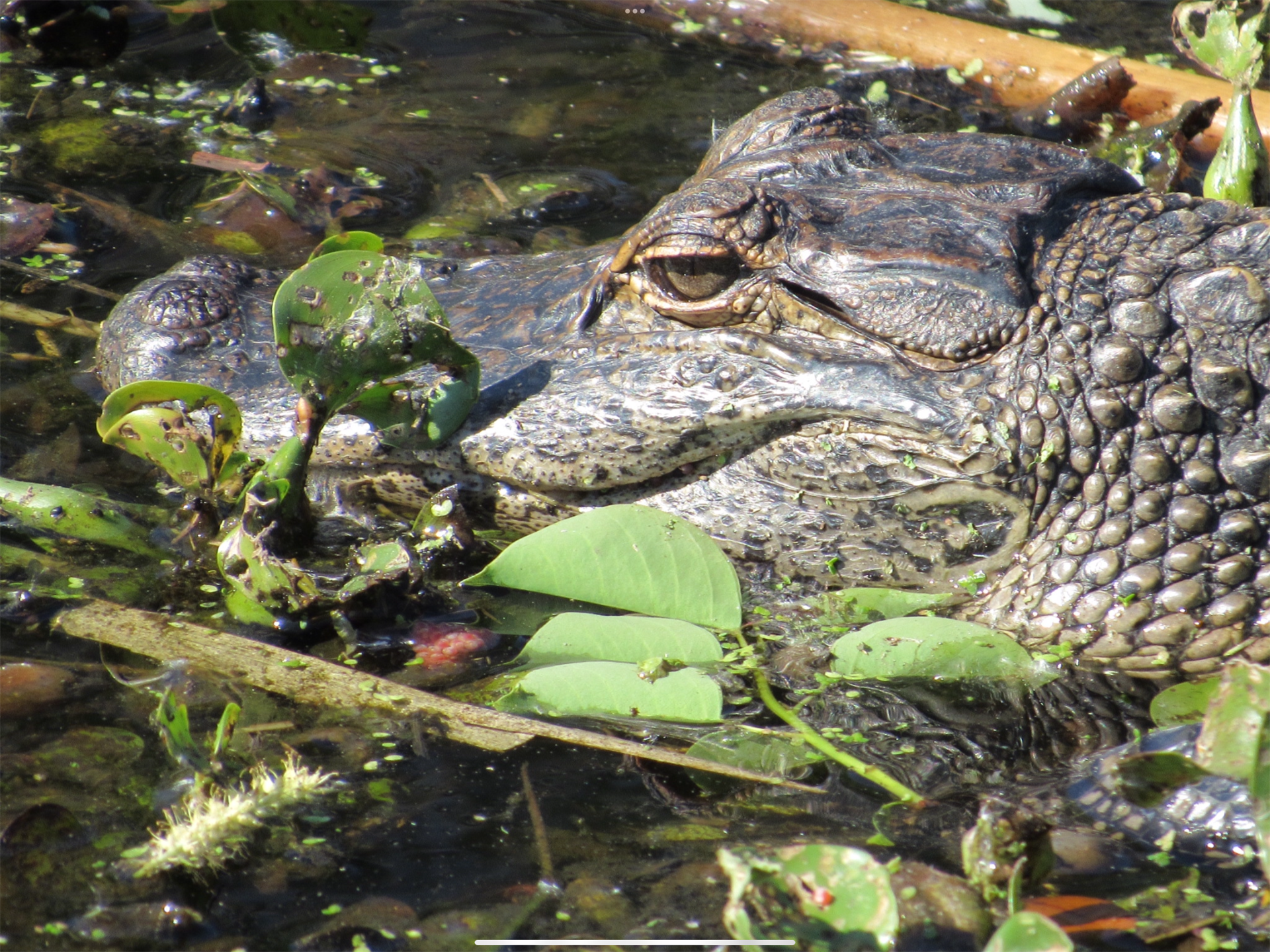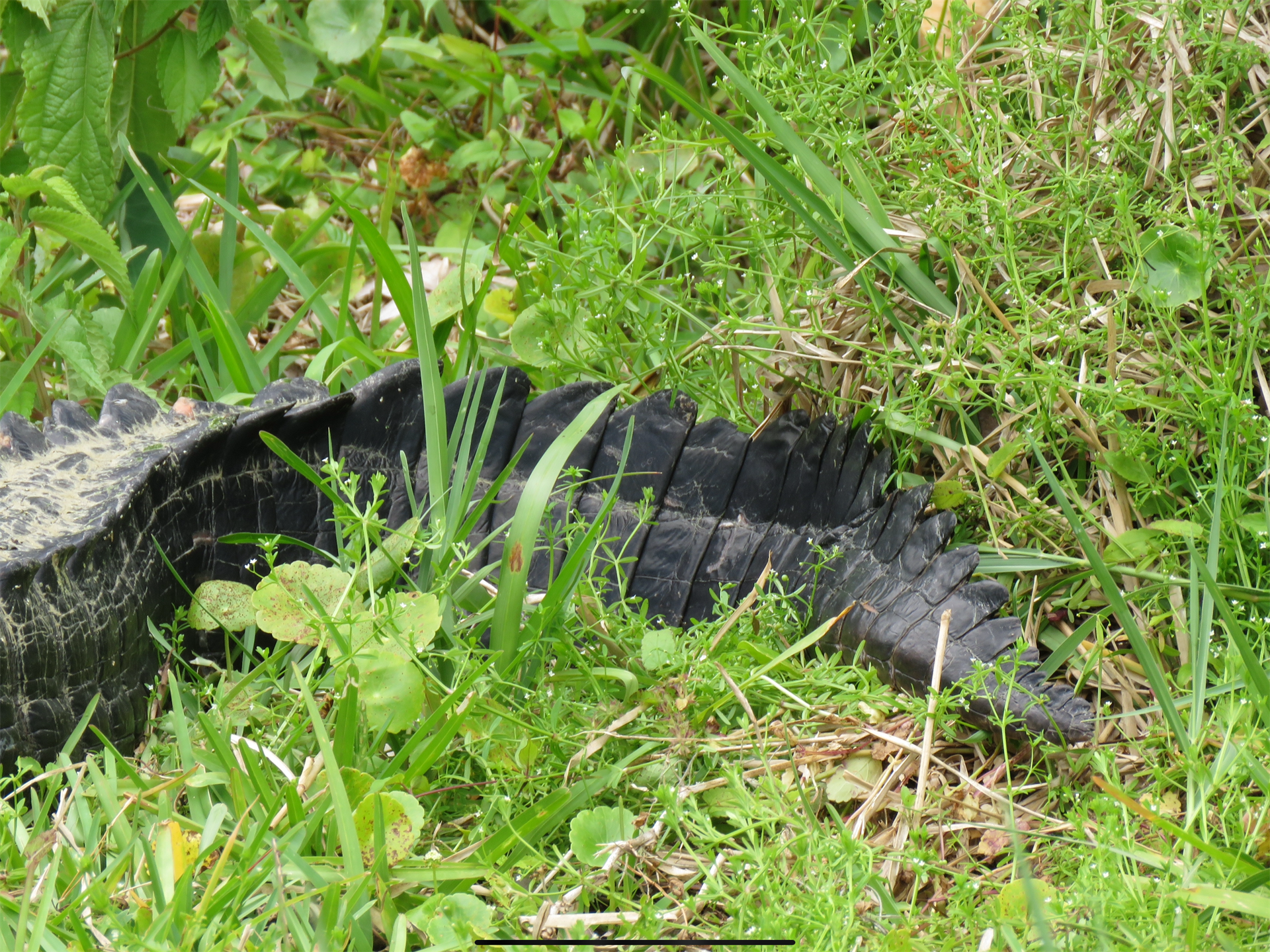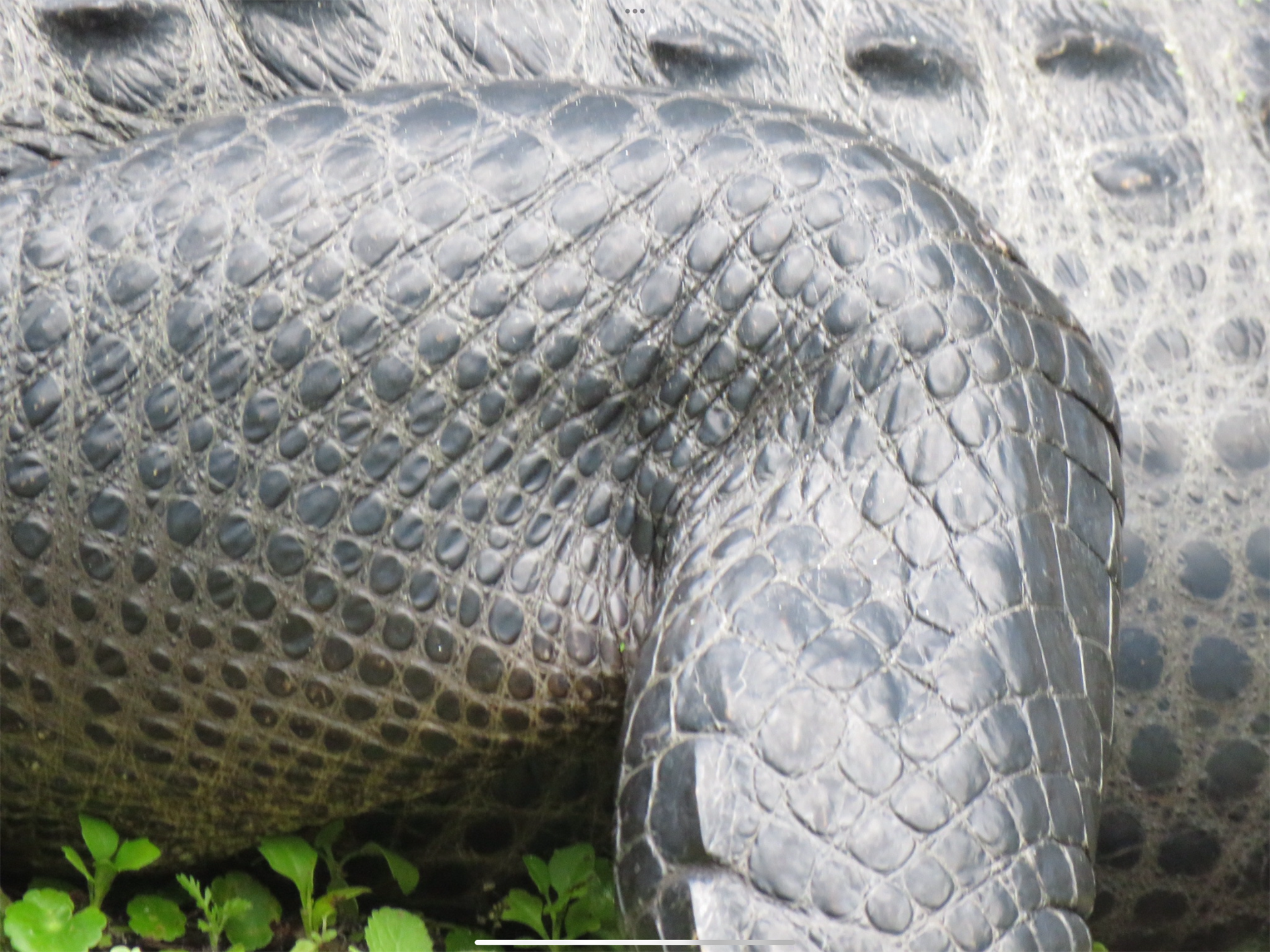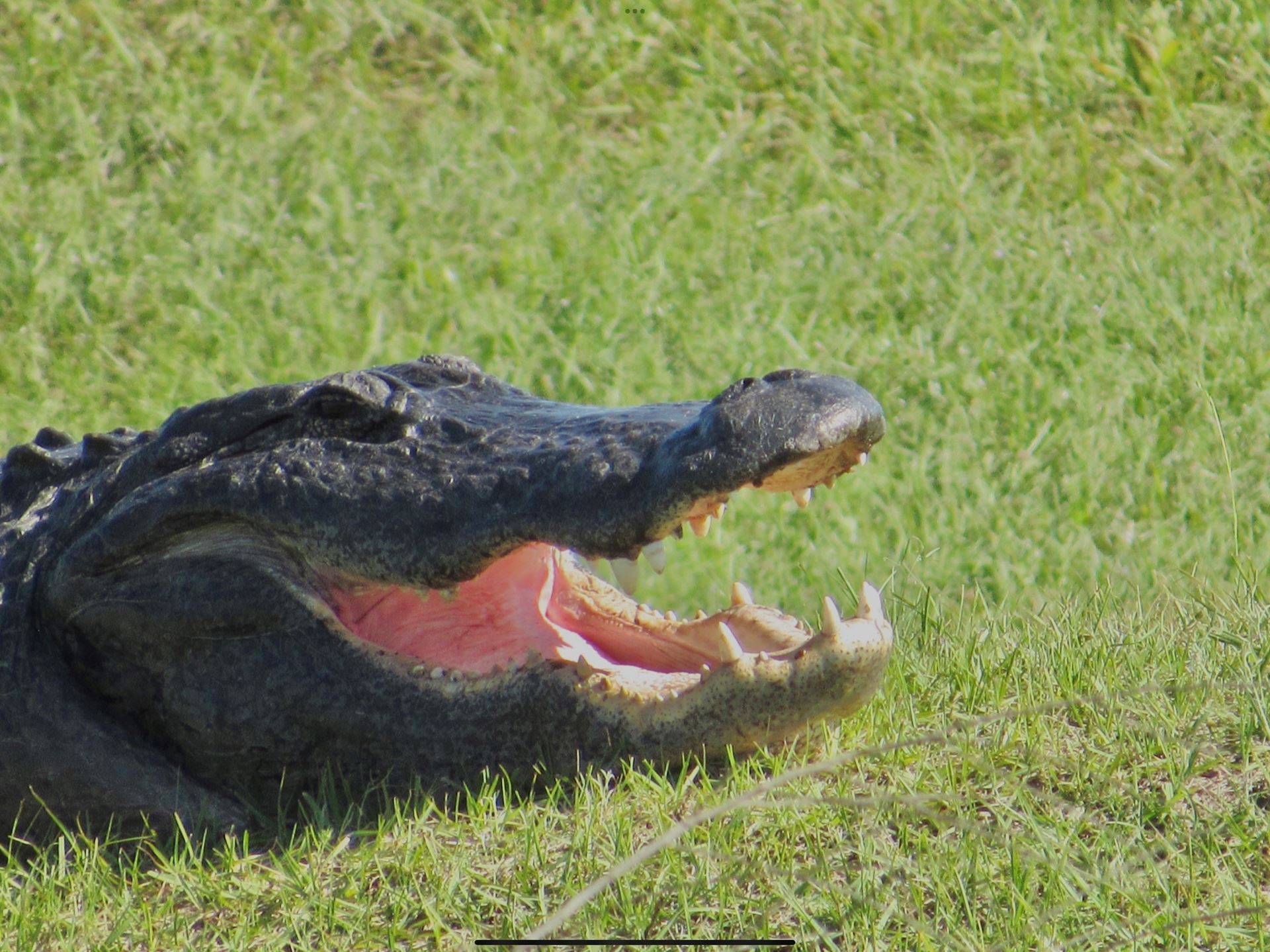The “Iconic” Alligator Nature’s perilous journey to adulthood on the Silver by Jim Nichols
I am a volunteer and have been doing River Patrol at Silver Springs State Park for the past 10 years. One of the most asked questions is always about the ‘iconic animal ’ of the Silver River, the alligator. Human beings have been around for less than a million years. Alligators have been here, unchanged, for over 200 million years! Now that is something to think about. We have a large assortment of alligators of all sizes here at the park. The tiniest are less than a foot long, vulnerable squirmers eaten by everything from herons and cranes to other alligators. Very few survive to adulthood. On the other end of the spectrum are huge, well armored, twelve footers! They’re at the top of the food chain with no enemies and often survive into alligator old age! (30 to 50 years!) Contrary to popular belief, alligators, are not actively aggressive. They eat rarely and spend most of their time peacefully basking in the sun. One of the few times, when female alligators can become dangerous, is during the nesting season. I shall devote the rest of this article to a discussion of this fascinating activity. Alligators typically mate in the spring, usually from April to June. One of the most interesting aspects of alligator behavior is how females bear and care for their young. Here is a short rundown of their reproductive activity: - Courtship Rituals: Males attract females by making deep, bellowing sounds, the deeper the better, and performing other courtship displays such as head-slapping, bubble blowing, and vigorously vibrating their entire body in the water. These activities are amazing to hear and to behold! - Female Choice: Females choose their mates based on the success of these antics , which showcase the size, strength, and dominance of males. Larger males, naturally, have a better chance of successfully attracting a mate. Once a male and female have paired, they engage in a ritual that involves head-to-tail circling, rubbing their snouts together, and vocalizing. - Nest Construction: After mating, the female, much like a bird, constructs a nest of vegetation, sticks, and mud. The nest is usually built in a secluded area near the water's edge. The female lays an average of thirty-five to fifty white and leathery eggs. She then covers them with more vegetation and mud to create a warm and protective environment. The eggs remain in the nest for 65 to 90 days, depending on ambient temperature. One of the most fascinating aspects of alligator reproduction is “Temperature-Dependent Sex Determination”. The sex of alligator hatchlings is determined by the temperature at which the eggs are incubated! Warmer temperatures produce males! Cooler temperatures produce females. The female guards the nest and defends it against any potential predator. She may also help regulate the temperature by adding or removing vegetation. This is one of the few times that alligators can actually become dangerous. Female nesting alligators should be given a wide berth. The female can hear the later developing alligators inside their shell! They communicate with each other and when they are ready to hatch, she will dig down in the nest to make it easier for them to emerge. She will often carry them gently in her mouth, a few at a time, down to the waters edge, and after that, will guard them for up to several months. I have often seen them sitting on the mother ’s large head and back! Nonetheless, very few of the offspring will make it into full sized adulthood. Alligator adolescence is a dangerous time for the juvenile. To view more photos highlighting features of these impressive critters, go to Silver Springs State Park River Patrol Blog: http://www.imagechaser.blogspot.com/ |
|
|
|
|






